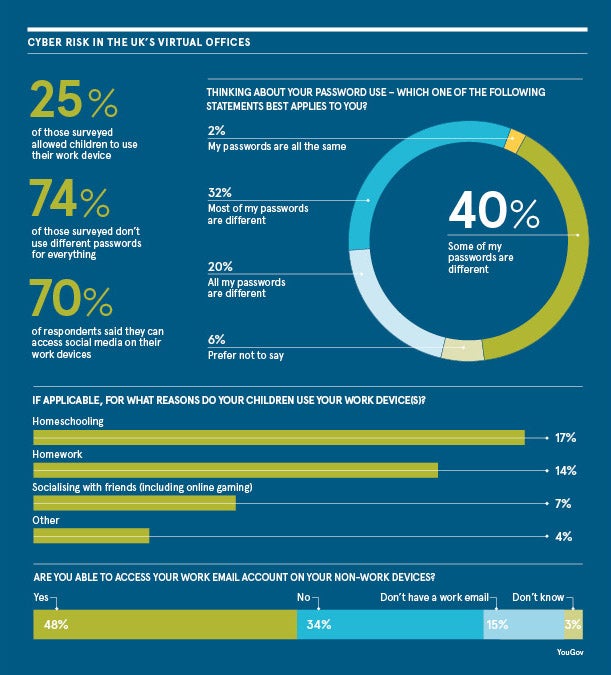
During the coronavirus pandemic, the notion of cloud has transformed from being a panicked race to adoption, to a more introspective and sustainable consideration for the long term. Consistent across the two approaches, however, is the question of how to make this transition securely and successfully.
Despite the constant media buzz around cloud adoption, it probably isn’t as rife as you’ve been led to believe. As revealed in a recent keynote delivered by AWS chief executive Andy Jassy, only 4 per cent of IT investment is currently being channelled towards cloud migrations, highlighting a discussion which has traditionally been dominated by intent, rather than actual investment.
“As you might expect, the pandemic has changed that narrative quite quickly and severely,” says Neil Christie, chief operating officer at cloud solutions provider iomart. “The race to adoption at the beginning of lockdown revolved around remote working and businesses needing to ensure workers could access data that was previously only available to them through the network in the office.
“In a lot of cases, this meant the usual levels of due diligence and consideration had to be abandoned by necessity because of the more immediate need to deliver operational readiness.”
For more than 20 years, iomart has followed and guided the evolution of the internet and companies’ relationships with all aspects of that loaded term “digital transformation”. However, the past 12 months has been unlike any other step-change, with prospective clients realising in the space of less than a year that an accelerated, often under-thought, overhaul isn’t the best way to progress.
Cloud protects your data but an uninformed leap into its arms puts you at risk
“Business leaders are now reviewing their decisions and considering the longevity of the choices they’ve made. Now is the time to reflect and plot the next stages of their cloud journey much more deliberately,” Christie adds.
Peeling the onion of cybersecurity
This is where much of iomart’s focus has been targeted over the past year, helping clients think more strategically and methodically about where their data lies, who needs to access it, where they should access it from and, vitally, what safeguards are in place for this now-disparate device and user footprint.
“There are a lot of conversations happening about how data in off-site locations can be safeguarded, from both an accessibility and storage standpoint,” says Christie.
Chief among these considerations is cybersecurity. Sadly, a global health crisis hasn’t been enough to dissuade cybercriminals from attacking vulnerable people and businesses. Rather, it’s been a red rag to a bull, to see so many employees forced into uncertain siloed operations.
“The lines have been blurred between personal and business use when it comes to their devices,” Christie explains. “It’s totally understandable; this is not just working remotely, but trying to work from home while juggling childcare, home schooling and the additional burdens the pandemic has brought.
“This change in behaviour patterns, particularly in a busy home, makes the corporate environment more vulnerable to a security breach. Consultation and guidance around security matters should now take precedence as remote working is going to play a much bigger part in the life of every business.”
With each customer, iomart takes an “onion-layer” approach to digital protection. This begins with the organisation’s users and devices that are outside the network, before peeling away at more technical elements, such as access to the network, gateway firewalls and the server or cloud environment. Deeper down comes the applications and that’s where much of the sensitive data lies.
“Not only do we work through these layers methodically, but we do so in a way that outlines what each protective step means for the business and their employees,” Christie continues. “We’ve conducted a YouGov survey in recent weeks, which has highlighted the risks that can result from seemingly innocuous everyday behaviours in the home.
“Often they’re based on basic security hygiene like device sharing within families, using common passwords across multiple systems, the blurring of personal and work devices, the access given to certain applications or social media habits.”

‘What does transformation mean to me?’
Slowing down transformation allows for closer auditing of a business’s current situation, their ambitions and the best way to get from the former to the latter.
In iomart’s case, this auditing then continues almost on a daily basis, analysing the trajectory of a company’s digital transformation and the significant elements entailed, such as cybersecurity.
“Historically, these reflections and audits take place every few months to gauge progress, but I think the past year has proved that a lot can happen in such a short space of time. More companies are realising that a potential breach or pitfall at any stage could be catastrophic.”
Companies aren’t just responsible for their own administrative data, they also play host to sensitive information pertaining to employees, partners, suppliers, customers and even customers of customers. While the cloud offers a way to store and safeguard such data, an uninformed leap into its arms is likely to skip vital steps and put this information at risk of attack.
“This penny does seem to be dropping as we enter 2021,” says Christie. “Conversations have shifted mindsets. The focus is now on thinking about what change means in the long term.”
Taking the long view was integral for the National Lottery Community Fund, which recently completed a strategic transformation with iomart’s help. With consideration given to the way staff needed to work, coupled with a focus on security and connectivity, the fund was able to deliver more than £650 million of National Lottery funding during the pandemic in 2020.
Matthew Green, the organisation’s technology and data director, says: “In two short years, we enabled the fund to be truly embedded within the communities we serve.
“Comprehensive engagement, careful planning and effective partnering has enabled all our colleagues to communicate, collaborate and share information securely within and beyond our digitally enabled organisation.”
Safeguarding digital futures
The notion of software as a service is nothing new and businesses will hopefully now be turning to prospective managed service providers off the back of sustainable consideration rather than impulse and fear.
The security discussion demonstrates this journey perhaps better than any other, as it illustrates the jeopardy thrust upon companies this time last year, the initial panic that ensued and now the opportunity to reset for the long term.
“Remote working isn’t going anywhere,” Christie concludes, “so it makes sense to ask questions, do due diligence and to make digital transformation a process rather than a race.”
In essence, by taking these considered steps and by working through each layer of the onion, companies can safeguard their cloud adoption, cybersecurity and wider digital roadmaps, simultaneously.
For more information please visit iomart.com
Promoted by iomart

During the coronavirus pandemic, the notion of cloud has transformed from being a panicked race to adoption, to a more introspective and sustainable consideration for the long term. Consistent across the two approaches, however, is the question of how to make this transition securely and successfully.
Despite the constant media buzz around cloud adoption, it probably isn’t as rife as you’ve been led to believe. As revealed in a recent keynote delivered by AWS chief executive Andy Jassy, only 4 per cent of IT investment is currently being channelled towards cloud migrations, highlighting a discussion which has traditionally been dominated by intent, rather than actual investment.
“As you might expect, the pandemic has changed that narrative quite quickly and severely,” says Neil Christie, chief operating officer at cloud solutions provider iomart. “The race to adoption at the beginning of lockdown revolved around remote working and businesses needing to ensure workers could access data that was previously only available to them through the network in the office.

